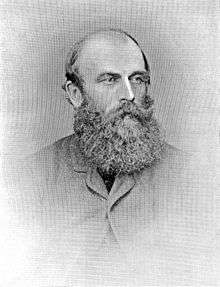Thomas Strangeways
| Thomas Strangeways Pigg Strangeways | |
|---|---|
 | |
| Born | 1866 |
| Died | 1926 |
| Nationality | British |
| Fields | Pathology, cell biology |
| Academic advisors | Alfredo Kanthack |
| Notable students | Honor Fell |
| Known for | Founding the Strangeways Research Laboratory; developing tissue culture techniques |
Thomas Strangeways Pigg Strangeways (1866-1926) was a British pathologist, known for founding the Cambridge Research Hospital, which was renamed the Strangeways Research Laboratory following Strangeways' death in 1926.[1]
Education and early career
Strangeways was born Thomas Strangeways Pigg in 1866.[2] Strangeways studied under Alfredo Kanthack at St Bartholomew's Hospital and received his medical degree in 1890.[1][2] He followed Kanthack to the University of Cambridge after Kanthack was offered the chair of the Pathology Department there. Strangeways became a demonstrator and subsequently a lecturer in pathology at the University of Cambridge.[1][3]
Founding of Cambridge Research Hospital

Strangeways developed an interest in the pathology of rheumatoid arthritis and in 1905 founded the Cambridge Research Hospital in order to study patients suffering from this and related conditions. Funded largely by Strangeways himself, noted doctors of his acquaintance, and donations from patients, the hospital began modestly with only six beds, and with research equipment located in renovated coal sheds.[3][4] It closed briefly in 1908 due to lack of funding, but quickly reopened and moved to its current site in 1912 thanks to the support of Otto Beit and to its temporary repurposing as a hospital for military officers in World War I. The hospital returned to its research purpose in 1917. Later, in 1923, the clinical aspects of the laboratory's work were moved back to St Bartholomew's Hospital so that the laboratory could focus on then-newly developing technologies in tissue culture and cell biology. Having learned about tissue culture techniques from Alexis Carrel, Strangeways took great interest in the new field, including developing demonstrations of the technique for his lectures. After University of Edinburgh zoology student Honor Fell spent a summer working with him, he hired her as a research assistant;[5]:246–7 she would take over leadership of the laboratory following Strangeways' death in 1926. In the 1920s and 30s, the laboratory was the only British institution focused specifically on tissue culture technique,[3][6]:63 the utility of which was a controversial topic among scientists of the time.[7]
Personal life
Strangeways became engaged to Dorothy Beck in 1901 and the couple married in 1902.[1] As of the construction of the new hospital building in 1912, they had two children.[4] Strangeways financed his laboratory out of his own earnings for most of his life, although he was not personally wealthy; a later director of the laboratory, John Dingle, wrote in a retrospective that "there is little doubt that his family suffered financially" from his investments,[8] although Dorothy was consistently supportive of the project.[5]:247–8 Strangeways died unexpectedly of a brain haemorrhage in 1926.[3][9]
References
- 1 2 3 4 "Thomas Strangeways". University of Cambridge Department of Public Health and Primary Care. Retrieved 9 December 2015.
- 1 2 "Strangeways Research Laboratory". AIM25: Archives in London and the M25 area. Retrieved 9 December 2015.
- 1 2 3 4 Hall, LA (April 1996). "The Strangeways Research Laboratory: archives in the contemporary medical archives centre.". Medical History. 40 (2): 231–8. PMC 1037097
 . PMID 8936063. doi:10.1017/s0025727300061020.
. PMID 8936063. doi:10.1017/s0025727300061020. - 1 2 Adamson, David M. (2015). "7". An Era of Expansion: Construction at the University of Cambridge 1996–2006. Routledge. ISBN 1317531418.
- 1 2 Shils, Edward; Blacker, Carmen (1995). Cambridge women : twelve portraits (1 ed.). Cambridge [u.a.]: Cambridge University Press. ISBN 9780521483445.
- ↑ Squier, Susan Merrill (2004). Liminal lives imagining the human at the frontiers of biomedicine. Durham: Duke University Press. ISBN 9780822386285.
- ↑ Wilson, D (August 2005). "The Early History of Tissue Culture in Britain: The Interwar Years.". Social history of medicine : the journal of the Society for the Social History of Medicine / SSHM. 18 (2): 225–243. PMC 1397880
 . PMID 16532064. doi:10.1093/sochis/hki028.
. PMID 16532064. doi:10.1093/sochis/hki028. - ↑ Dingle, JT (November 1987). "Seventy five years of arthritis research at the Strangeways Research Laboratory: 1912-87." (PDF). Annals of the rheumatic diseases. 46 (11): 801–3. PMC 1003395
 . PMID 3322210. doi:10.1136/ard.46.11.801.
. PMID 3322210. doi:10.1136/ard.46.11.801. - ↑ "The Honor Fell papers". Wellcome Library. Retrieved 9 December 2015.